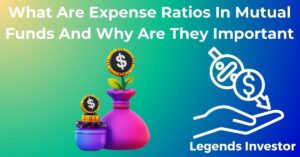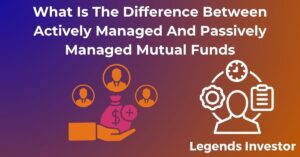Introduction to Mutual Funds and Associated Costs
Mutual funds are popular investment vehicles that pool money from multiple investors to purchase a diversified portfolio of stocks, bonds, or other securities. They offer a convenient way for individual investors to access professional management and diversification, making them an attractive option for both novice and experienced investors. However, understanding the associated costs is crucial for maximizing returns and making informed investment decisions.
The fees and costs associated with mutual funds can significantly impact your investment returns over time. Whether you’re just starting your investment journey or looking to optimize your portfolio, this article will provide comprehensive insights into the various costs of mutual funds. By understanding these fees, you’ll be better equipped to make informed decisions, minimize expenses, and maximize your investment potential.
Front-End Loads: The Entry Cost of Mutual Funds
Definition of Front-End Loads
Front-end loads are sales charges or commissions that investors pay when they purchase shares in a mutual fund. These fees are typically expressed as a percentage of the initial investment and are deducted from the amount you invest. For example, if a mutual fund has a front-end load of 5%, and you invest $10,000, $500 will go toward the sales charge, and $9,500 will be invested in the fund.
How These Fees Affect Your Initial Investment
Front-end loads reduce the amount of money that goes into your investment, which can have a long-term impact on your returns. The less money you invest upfront, the less potential there is for growth through compounding. It’s important to carefully consider whether the mutual fund’s potential performance justifies the upfront cost of the front-end load.
The Impact of Front-End Loads on Long-Term Investments
Over time, the impact of front-end loads can diminish as your investment grows, but the initial reduction in your investment capital can still affect your overall returns. Investors should weigh the cost of front-end loads against the potential benefits of the fund, such as professional management and diversification. In some cases, no-load funds (funds without sales charges) may offer a more cost-effective option for long-term investors.
Back-End Loads: Understanding the Exit Fees
Explanation of Back-End Loads or Deferred Sales Charges
Back-end loads, also known as deferred sales charges (DSCs), are fees that investors pay when they sell their mutual fund shares. Unlike front-end loads, these charges are deducted when you exit the investment. Back-end loads are usually calculated as a percentage of the value of the shares being sold and may decrease over time the longer you hold the investment.
Conditions Under Which These Fees Are Applied
Back-end loads are typically structured to discourage short-term trading and incentivize long-term holding. These fees may decrease gradually over a period of several years, eventually reaching zero if the shares are held long enough. For example, a mutual fund might impose a 5% back-end load if shares are sold within the first year, decreasing by 1% each subsequent year until the fee is eliminated after five years.
The Decline of Back-End Loads Over Holding Periods
The declining nature of back-end loads means that the longer you hold the investment, the lower the fee you’ll pay upon selling your shares. This structure encourages investors to remain committed to their investments for the long term, which can be beneficial in terms of compounding returns. However, it’s essential to be aware of these charges when planning your investment strategy, especially if you anticipate needing to access your funds before the load period expires.
The Expense Ratio: Ongoing Costs of Owning Mutual Funds
What the Expense Ratio Is and What It Includes
The expense ratio represents the annual operating costs of a mutual fund, expressed as a percentage of the fund’s average net assets. These costs include management fees, administrative expenses, and other operational costs. The expense ratio is deducted from the fund’s returns, meaning it directly impacts the amount of profit you earn from your investment.
The Difference Between Passive and Active Management Expense Ratios
Mutual funds can be actively or passively managed, and this distinction significantly affects the expense ratio. Actively managed funds, where professional managers actively select and trade investments, typically have higher expense ratios due to the cost of management and research. In contrast, passively managed funds, such as index funds, usually have lower expense ratios because they aim to replicate the performance of a specific index, requiring less active oversight.
Consequences of High Expense Ratios on Investment Returns
High expense ratios can erode your investment returns over time. Even a seemingly small difference in expense ratios can have a significant impact on long-term growth due to the compounding effect. For example, a fund with an expense ratio of 1.5% may seem comparable to one with a ratio of 0.5%, but over several decades, the lower-cost fund could result in substantially higher returns. Investors should carefully evaluate expense ratios when selecting mutual funds to ensure they are not overpaying for management services.
Transactional Fees: The Cost of Doing Business
Understanding Redemption Fees
Redemption fees are charges that investors pay when they sell their mutual fund shares, typically within a short period after purchasing them. These fees are intended to discourage short-term trading and to compensate the fund for the costs associated with frequent buying and selling. Redemption fees are usually expressed as a percentage of the sale amount and are different from back-end loads, as they are intended to benefit the remaining shareholders by offsetting the costs of high turnover.
Recognizing How Purchase Fees Differ from Front-End Loads
Purchase fees, like front-end loads, are charged when you buy shares in a mutual fund. However, purchase fees are typically paid to the fund itself rather than to a broker or salesperson, and they are used to cover the fund’s transaction costs. While both purchase fees and front-end loads reduce your initial investment, the purpose and recipients of these fees differ.
The Impact of Frequent Trading on Fees
Frequent trading within a mutual fund can lead to higher costs for both the fund and its investors. Funds with high turnover rates may incur more transaction costs, which can be passed on to investors through higher expense ratios or additional fees. Investors who frequently buy and sell mutual fund shares may also face higher redemption fees or be subject to short-term trading restrictions. It’s important to consider these factors when developing an investment strategy, particularly if you prefer a more active trading approach.
Additional Fees: Beyond the Basics
Account Service Fees and When They Are Charged
Some mutual funds charge account service fees to cover the cost of maintaining your account. These fees may be assessed on a regular basis (e.g., quarterly or annually) and can vary depending on the size of your investment or the services provided by the fund. For example, funds may charge an account service fee if your account balance falls below a certain threshold or if you request paper statements instead of electronic delivery.
Exchange Fees and Other Less Common Costs
Exchange fees may be charged when you transfer your investment from one mutual fund to another within the same fund family. These fees are generally modest but can add up if you frequently exchange shares. Other less common costs may include wire transfer fees, account closing fees, or fees for special services such as expedited processing of transactions.
The Importance of Reading the Prospectus for Hidden Fees
The mutual fund prospectus is a critical document that provides detailed information about the fund’s fees, investment objectives, risks, and other key features. It’s essential to thoroughly review the prospectus before investing to ensure you understand all potential costs, including those that may not be immediately apparent. Hidden fees can significantly impact your returns, so being informed is the first step toward making smart investment choices.
Tax Considerations When Buying or Selling Mutual Funds
Capital Gains Taxes and When They Are Incurred
When you sell mutual fund shares for a profit, you may be subject to capital gains taxes. The amount of tax you owe depends on the length of time you held the shares and your income tax bracket. Short-term capital gains (on shares held for one year or less) are typically taxed at a higher rate than long-term capital gains (on shares held for more than one year). It’s important to consider the timing of your sales and the potential tax implications when making investment decisions.
Dividend Distribution Taxes
Mutual funds often distribute dividends to shareholders, which may be subject to taxes. These dividends can be classified as ordinary dividends (taxed at your regular income tax rate) or qualified dividends (which may be taxed at a lower rate). Understanding how your mutual fund distributions are taxed can help you plan for your tax liability and potentially take advantage of tax-efficient investment strategies.
Strategies for Tax-Efficient Mutual Fund Investing
There are several strategies you can use to minimize the tax impact of your mutual fund investments. For example, holding mutual funds in tax-advantaged accounts such as IRAs or 401(k)s can help defer or eliminate taxes on capital gains and dividends. Additionally, tax-loss harvesting (selling losing investments to offset gains) can be an effective way to reduce your overall tax liability. It’s also worth considering mutual funds with lower turnover rates, as they are less likely to generate taxable capital gains.
Comparing Costs: Mutual Funds vs. Other Investment Vehicles
Contrast Mutual Fund Fees with Those of ETFs and Index Funds
Mutual funds, ETFs (exchange-traded funds), and index funds each have unique fee structures. Mutual funds often have higher expense ratios due to active management, while ETFs and index funds generally have lower costs because they are passively managed. ETFs, like stocks, may also incur trading commissions, but their expense ratios are typically lower than those of mutual funds. Understanding these differences can help you choose the right investment vehicle based on your cost tolerance and investment objectives.
Why Fee Structures Differ from Investment to Investment
The fee structures of different investment vehicles reflect the varying levels of management, trading, and administrative services required. Actively managed mutual funds require more research, analysis, and trading, leading to higher costs. In contrast, passively managed funds, such as index funds, require less frequent trading and lower administrative costs, resulting in lower
4o



